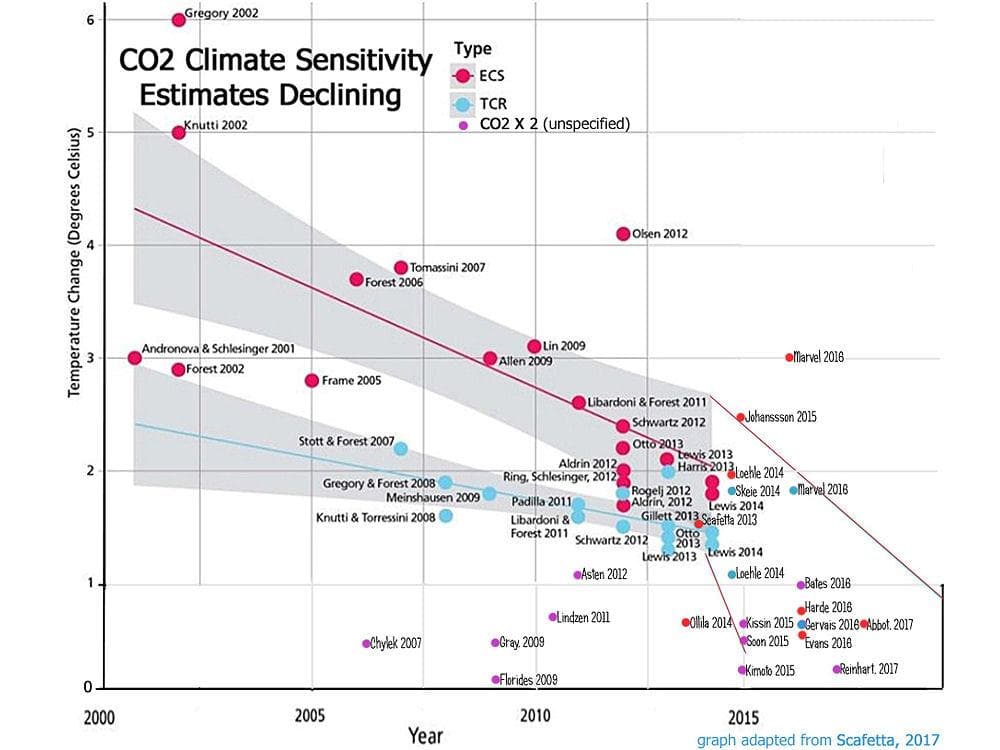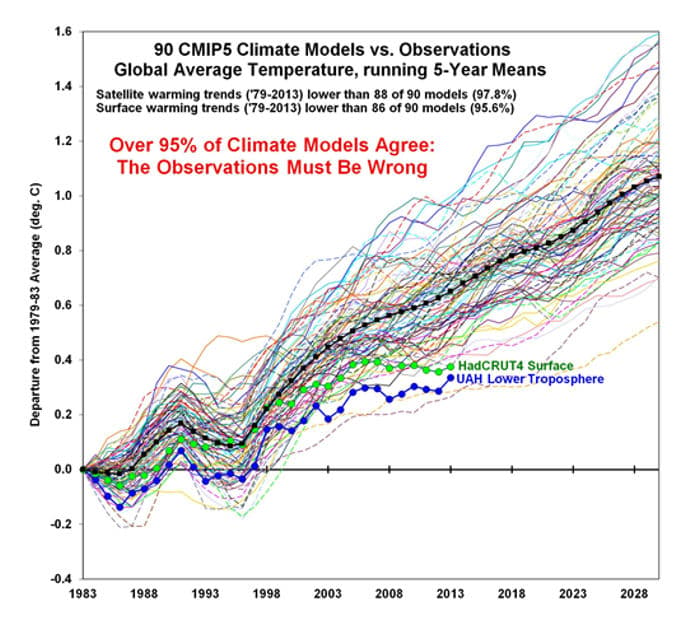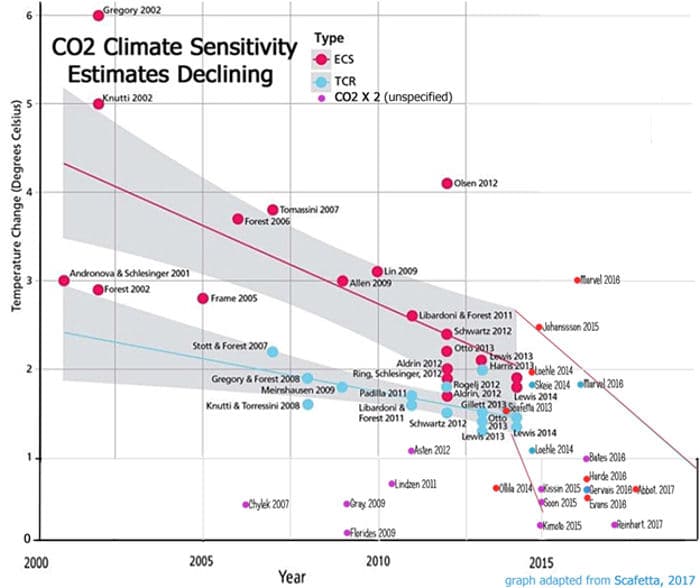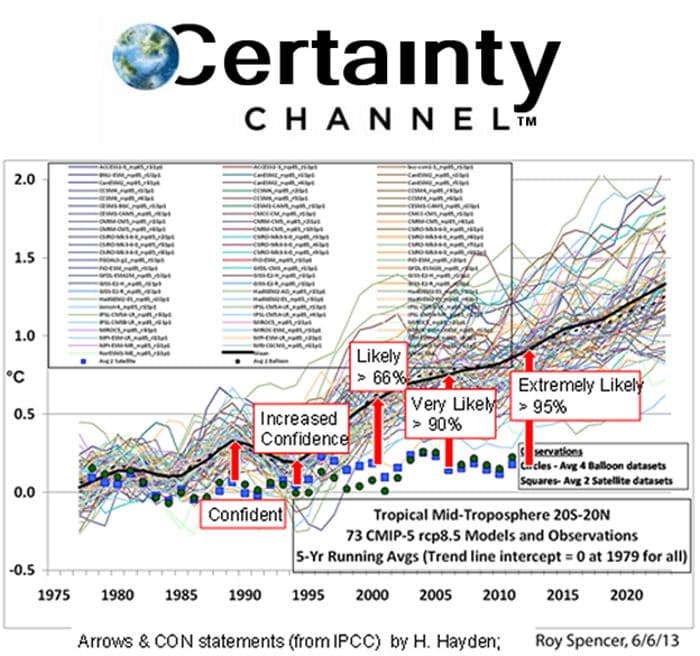Elements of the consensed climate science community have recently acknowledged that the projections of future global average near-surface temperature anomalies produced by the CMIP5 ensemble of climate models are 2-3 times higher than the “adjusted” near-surface temperature observations, as shown below.

This is a first crucial step in the process of identifying the causes of the differences between the projections and the observations and then correcting the models and their inputs to resolve the discrepancies.
There are several potential issues to be addressed in this process:
- the current models do not accurately model the functions of the environment;
- the current models were “tuned” with faulty near-surface temperature data;
- the climate sensitivity values used to run the models are too high; and,
- the forcings and feedbacks used to run the models are incorrect.
Each of these issues must be addressed and resolved before any of the models can be verified, no less demonstrated to have any predictive ability. The first issue listed will likely be the last issue resolved, since it cannot be properly addressed until the inputs to the models are verified to be accurate. Until one or more of the models is verified, the projections produced by the models are unsuited to form the basis for economically significant government policy formation.
A recent study has documented numerous flaws in the HadCRUT4 temperature anomaly product which would render it highly questionable as the basis upon which to tune the various climate models. However, HadCRUT4 is the near-surface temperature data set preferred for this purpose by the IPCC and the UNFCCC. Other analyses suggest that the NASA GISS and NOAA/NCDC temperature anomaly products are even more flawed than HadCRUT4.
A review of recent studies of climate sensitivity to a doubling of the atmospheric CO2 concentration documents progressive reduction of the central estimate of climate sensitivity, as shown below.

The IPCC uses a climate sensitivity range of 1.5 - 4.5°C in its Fifth Assessment Report. Virtually all of the most recent estimates fall toward the lower end of that range, or below the lower end of the range. Therefore, it is apparent that one of the principal factors causing the model projections to be higher than the observations is excessive sensitivity estimates. While this issue is obviously being actively addressed by climate scientists, it is uncertain whether the IPCC will reflect the results of this research in its next assessment report.
A study of the issues of forcings and feedbacks in the climate system identifies that it is still uncertain whether the net feedbacks in the climate system are positive or negative, no less the magnitude of effects. Note that his study is 10 years old and the issue has still not been resolved.
Against this background, it is interesting to note that, as the divergence between the “adjusted” near surface observations and the climate models increases over time, the reported IPCC confidence in its conclusions regarding future warming and the role of human activities in that warming continue to increase, as shown below.

This represents an apparent victory of hope over experience.
“History is a set of lies agreed upon.” - Napoleon Bonaparte



